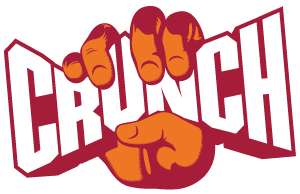When it comes to losing weight, it can be hard to differentiate between fat loss vs. weight loss and why it matters. However, there are actually key differences that can help you understand your body composition numbers when you step on the scale.
If that sounds complicated, we’ve got you covered. Keep reading and we’ll share what you need to know to stay motivated on your fitness journey!
The difference between fat loss and weight loss
Losing weight in a healthy and sustainable way can be hard. While tracking goals is crucial, only tracking scale weight doesn’t give you an accurate picture of how your body is changing as you eat the right nutrients and spend time at the gym.
To understand all of the different factors that are important when it comes to fat loss vs. weight loss and overall health, it’s important to define each of these terms and look at how they come into play.
Fat and Fat Loss: Defined
Fat loss is arguably the most important when it comes to body composition and weight management, but there are many types of fat that can affect your health, such as visceral fat, subcutaneous fat, and white, brown, and beige fat. And they’re not all bad!
In fact, our bodies need a certain amount of fat to be healthy. For example, having a healthy body fat percentage helps us regulate our body temperature, balances our hormones, aids in reproductive health, helps with balancing blood sugar levels, and helps with a healthy metabolism — just to name a few.
So, even though we often hear “fat” as a bad term being thrown around, it’s much more complex than you might think.
Weight and Weight Loss: Defined
Weight loss can be tricky and doesn’t just involve shedding actual fat cells. In fact, the University of Utah shared that weight can be affected by how your hormones and neurons interact in your brain and that your body may actually be working against you as you try to lose weight — and keep it off.
In addition, the numbers reflected on the scale can mean you’re gaining or losing any body component, such as fat, muscle, or even water. So, as you drink water, experience cycle fluctuations, gain muscle mass from working out, and gain or lose fat, the scale may yo-yo in response.
To a degree, fluctuations in this number are perfectly normal as your body goes through its regular daily and monthly cycles, but you may want to see a consistent trend downward if you’re pursuing weight loss.
How to tell the difference?
Since the scale isn’t a reliable way to measure whether or not you’re actually losing fat, there are a few other ways to tell how your body is changing.
One of the best ways to keep track of your hard work and progress is to have your body composition tested a few times throughout your weight loss journey. This will help determine how much of your body weight comes from lean mass and how much of it is fat.
You can also track the inches you are losing each week by using a tape measure and keeping records of how your body is gaining muscle mass along the way.
Tips for losing fat and maintaining muscle
Now that you know the difference between fat loss vs. weight loss, let’s look at our top tips for losing fat and maintaining muscle.
1) Eat enough protein
Protein is vital for maintaining muscle mass because it helps your body grow and repair cells.
Not to get too technical, but the 20 amino acids that make up proteins help your body build new ones, such as muscle and bone. Consuming foods like lean meats, fish, eggs, seeds, nuts, and legumes can give your body the necessary nutrients it needs to complete this building process.
2) Exercise
A combination of cardio and weight lifting can help your body burn fat and build muscle the right way. If you’re overwhelmed with where to start, our Crunch Fitness professionals can work with you to create the perfect plan for your body.
3) Eat with a small calorie deficit
Lastly, eat with a small calorie deficit. This exact number will vary for everyone, but eating fewer calories than you burn is a great way to jumpstart your weight loss journey and maintain your results over time.
But this doesn’t mean you have to go hungry or be miserable! Finding foods that nourish and satisfy your body can help you burn fat and build that healthy muscle mass you’re after.
Risks of losing muscle
Losing muscle can affect more than just your physical appearance. In fact, losing muscle mass can increase poor health outcomes like diabetes, lack of mobility as we age, cardiovascular concerns, and much more.
That’s why losing weight and fat aren’t the only concerns when it comes to a healthy lifestyle. A healthy weight loss strategy incorporates strength training as well to protect our bodies from the inside out.
Support for a healthy life
Sustainable weight loss doesn’t mean starving yourself or completing intense workouts every day. In fact, by working on fat loss vs. weight loss and not focusing solely on the number on the scale, you give your body composition a chance to improve sustainably.
Although it’s hard to get out of the habit of pulling out your trusty scale every day, there are so many more important things to consider on your health and wellness journey.
For example, eating enough protein, doing the right kinds of exercises for your body, and finding support when you need the right tools and motivation can all be important factors in your weight loss journey.
_______
At Crunch Fitness, we believe you were created for greatness and are here to cheer you on every day. We also have diverse skills and expertise to support you in the ways you need us most.
For more information on how a Crunch Fitness professional can help you crush your health goals, visit your nearest Crunch Fitness to get started today!
Want a FREE GYM SESSION!?
Hit the link below to receive your FREE GYM PASS to your nearest CRUNCH Gym!
👉🏻 CLICK HERE


Crunch Fitness Virtual Assistant
 I'd like some help reaching my Fitness goals!
I'd like some help reaching my Fitness goals! I'm an existing member and would like some help!
I'm an existing member and would like some help! I have some questions about becoming a Crunch member!
I have some questions about becoming a Crunch member! AU
AU United States
United States Canada
Canada Costa Rica
Costa Rica Spain
Spain Portugal
Portugal NSW Clubs
NSW Clubs VIC Clubs
VIC Clubs